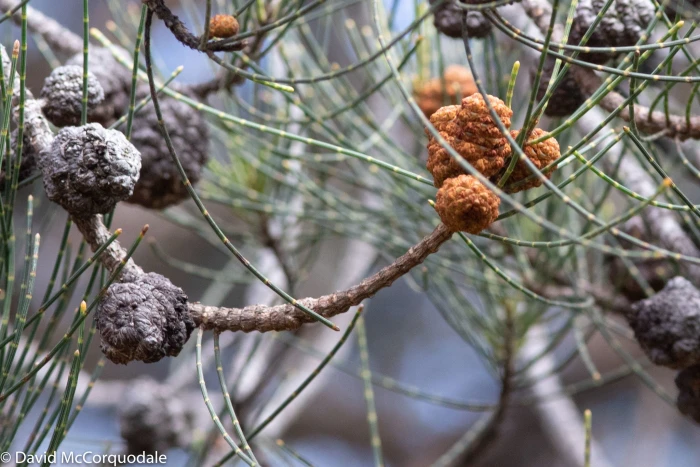Western Sheoak
(Allocasuarina fraseriana)
Western Sheoak (Allocasuarina fraseriana)
/
/

David McCorquodale
CC BY 4.0
Image By:
David McCorquodale
Recorded By:
Copyright:
CC BY 4.0
Copyright Notice:
Photo by: David McCorquodale | License Type: CC BY 4.0 | License URL: http://creativecommons.org/licenses/by/4.0/ | Rights Holder: David McCorquodale | Publisher: iNaturalist | Date Created: 2018-11-03T09:39:53-07:00 |




















Estimated Native Range
Climate Requirements for Magdeburg, Germany
| This Plant | Your Site | Plant Suitability for Your Location | ||
|---|---|---|---|---|
| • Precipitation | 13" - 57" | 20" | Your precipitation may be insufficient for this plant. Irrigate N" / year. | Irrigate N" / year |
| • High Temp. | 73°F - 97°F | 76°F | Your summer temperatures are normal for this plant. | Excellent |
| • Low Temp. | 41°F - 59°F | 28°F | Your winter temperatures may be too cold for this plant | Too cold |
This plant should grow well at your location with about N inches per year (Y minutes per month) of irrigation.
Summary
Allocasuarina fraseriana, commonly known as Western Sheoak or Fraser’s Sheoak, is a monoecious tree endemic to the sandy soils and coastal heathlands of the southwest of Western Australia. It can grow to a height of 16-49 feet tall with a trunk diameter of 1 foot 8 inches to 3 feet 3 inches. The tree is characterized by its erect branchlets and leaves that are reduced to scale-like teeth, giving it a fine-textured, needle-like appearance. The Western Sheoak flowers from May to October, producing inconspicuous flowers followed by woody cones and winged seeds that are dispersed by wind. The wood of Western Sheoak has a history of use for shingles and kegs and is currently prized for wood-turning and carving. It also provides food for the red-eared firetail, a species of bird, and holds cultural significance for the Noongar people.
In cultivation, Western Sheoak is valued for its ability to grow in poor sandy soils and its tolerance to drought, making it suitable for xeriscaping and coastal gardens. It is often used as a windbreak or for erosion control due to its robust root system. Gardeners should plant it in full sun to part shade and ensure well-drained soil conditions. While generally low-maintenance, it can be susceptible to root rot in poorly drained soils. It is not known to be invasive when grown outside its native range, but as with all non-native plantings, care should be taken to monitor its growth and spread.CC BY-SA 4.0
In cultivation, Western Sheoak is valued for its ability to grow in poor sandy soils and its tolerance to drought, making it suitable for xeriscaping and coastal gardens. It is often used as a windbreak or for erosion control due to its robust root system. Gardeners should plant it in full sun to part shade and ensure well-drained soil conditions. While generally low-maintenance, it can be susceptible to root rot in poorly drained soils. It is not known to be invasive when grown outside its native range, but as with all non-native plantings, care should be taken to monitor its growth and spread.CC BY-SA 4.0
Plant Description
- Plant Type: Tree
- Height: 20-35 feet
- Width: 10-20 feet
- Growth Rate: Moderate
- Flower Color: N/A
- Flowering Season: Spring
- Leaf Retention: Evergreen
Growth Requirements
- Sun: Full Sun, Part Shade
- Water: Medium
- Drainage: Medium, Fast
Common Uses
Bird Garden, Drought Tolerant, Erosion Control, Low Maintenance
Natural Habitat
Endemic to sandy soils and coastal heathlands of the southwest of Western Australia
Other Names
Common Names: Western Sheoak, Fraser’s Sheoak, Common Sheoak
Scientific Names: Allocasuarina fraseriana, Casuarina fraseriana, Casuarina nana, Casuarina stricta var. fraseriana, Casuarina torulosa
GBIF Accepted Name: Allocasuarina fraseriana